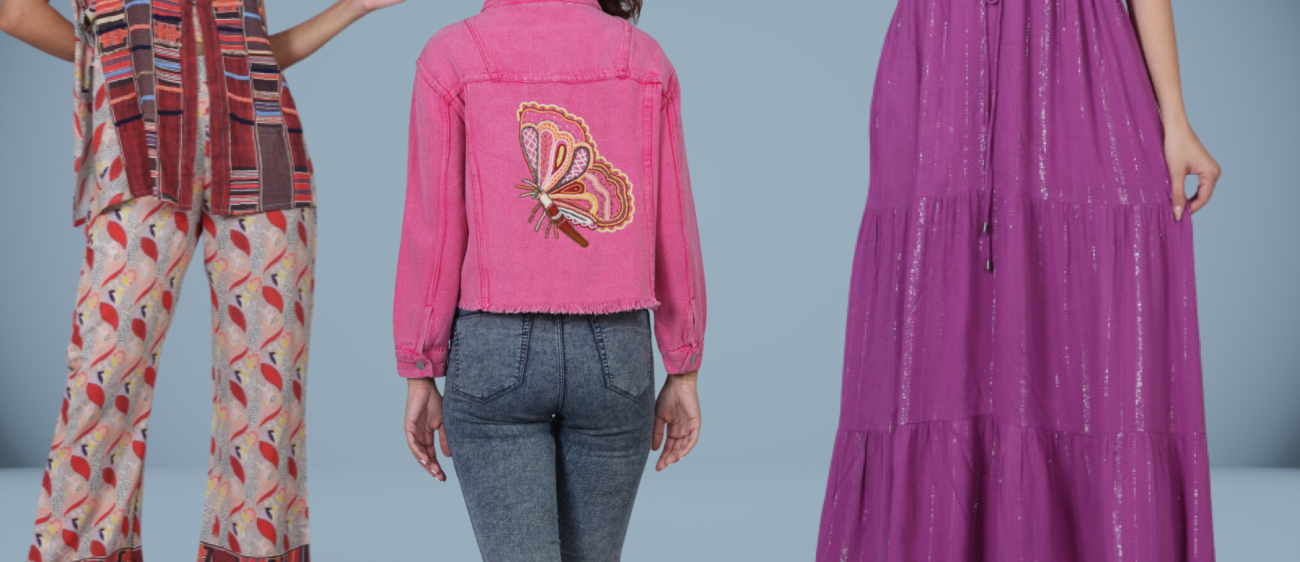Colors play a pivotal role in Indian fashion, not only as a visual delight but also as a representation of deep cultural, spiritual, and emotional significances. Each color carries a unique meaning and is used to convey various messages, symbolizing aspects of life, tradition, and festivity. In this blog, we’ll explore the rich tapestry of colors in Indian fashion and their profound significance.

1. Red: The Color of Love and Auspiciousness
Red is perhaps the most significant color in Indian culture. It symbolizes love, passion, and fertility. This is why red is the color of choice for bridal wear in many Indian weddings. Brides often wear red sarees or lehengas, adorned with intricate gold embroidery, as it is believed to bring prosperity and happiness to their married life. Red is also used in festivals like Durga Puja and Diwali, symbolizing the triumph of good over evil.
2. Yellow: The Color of Turmeric and Purity
Yellow represents purity, happiness, and peace. It is the color of turmeric, which is an integral part of Indian rituals and ceremonies. During auspicious occasions like the Haldi ceremony in weddings, the bride and groom are smeared with turmeric paste, symbolizing purification and protection. Yellow garments are often worn during spring festivals like Vasant Panchami, celebrating the season of new beginnings.
3. Green: The Color of Life and Renewal
Green signifies life, growth, and fertility. It is associated with nature and the environment, representing harmony and freshness. Green is commonly worn during harvest festivals like Pongal and Makar Sankranti, symbolizing abundance and prosperity. In Indian weddings, green bangles are often worn by married women as a symbol of fertility and well-being.
4. Blue: The Color of Divinity and Calm
Blue is associated with divinity, serenity, and stability. It is often linked to Lord Krishna, who is depicted with blue skin, symbolizing his divine nature and infinite power. Blue represents the vastness of the sky and the ocean, evoking a sense of calm and tranquility. In Indian fashion, blue garments are worn to symbolize wisdom and calmness, making them a popular choice for everyday wear.
5. White: The Color of Peace and Mourning
White is a color of dual significance in Indian culture. It represents purity, peace, and truth, but it is also associated with mourning and bereavement. White garments are worn during funerals and periods of mourning to signify purity and the soul’s journey to the afterlife. However, white is also worn during spiritual and religious ceremonies, symbolizing cleanliness and detachment from materialism.
6. Gold: The Color of Wealth and Prosperity
Gold holds a place of great reverence in Indian culture, symbolizing wealth, prosperity, and grandeur. Gold embroidery, jewelry, and accessories are essential components of bridal wear and festive attire. Wearing gold is believed to attract positive energy and blessings, making it a staple in Indian celebrations and rituals.
7. Orange: The Color of Saffron and Sacrifice
Orange, particularly saffron, is a color of spirituality and sacrifice. It is closely associated with Hinduism and is the color of the robes worn by saints and monks, symbolizing renunciation and spiritual enlightenment. In Indian fashion, orange is often worn during religious ceremonies and festivals, signifying devotion and purity.
8. Pink: The Color of Romance and Joy
Pink is a color of love, compassion, and joy. It is a popular choice for festive occasions and celebrations, symbolizing happiness and positivity. In recent years, pink has also become a fashionable color for bridal wear, offering a modern alternative to the traditional red. The use of pink in Indian fashion reflects a blend of traditional values and contemporary style.
Conclusion
The vibrant palette of Indian fashion is a reflection of the country’s rich cultural heritage and diverse traditions. Each color carries a story, a belief, and a significance that transcends mere aesthetics. By understanding the meaning behind these colors, we can appreciate the depth and beauty of Indian fashion in a new light.
Whether you’re donning a red bridal lehenga, a yellow saree for a festival, or a green kurti for a casual day out, remember that each color you wear is steeped in history and cultural significance. Embrace these colors and let them add a touch of tradition and meaning to your wardrobe, celebrating the timeless beauty of Indian fashion.
Incorporate these vibrant hues into your fashion choices and experience the profound impact of colors in Indian culture. Each color tells a story, and by wearing them, you become a part of that rich narrative.
Thankyou for reading our blog.


